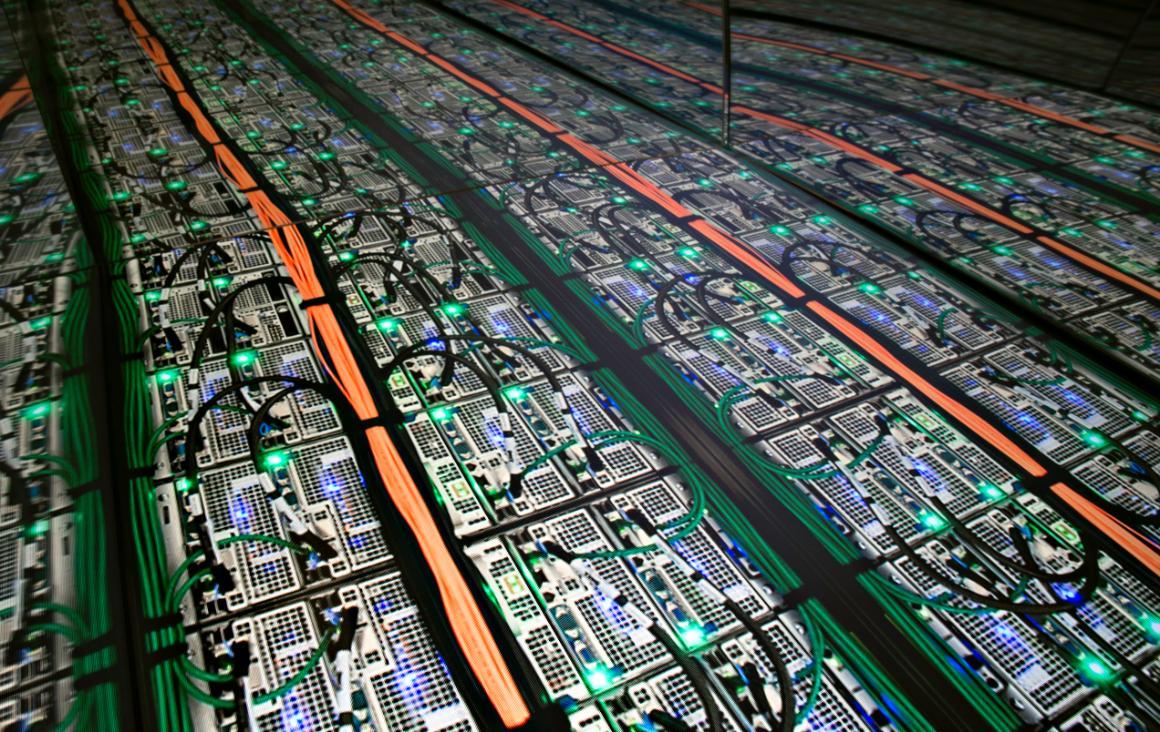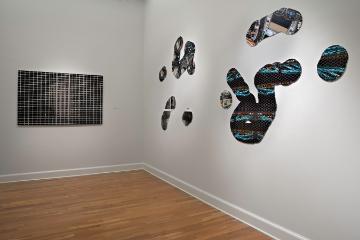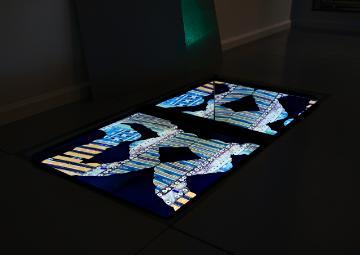
Life in the Shadows
Big data knows more about your life than you realize. In Data Shadows (Dowd Building, July 24–Sept. 21), artist AnnieLaurie Erickson explores the real impact of your digital identity.
Every time someone goes online, they leave a trail of information behind them. Some of the information is trivial, some more important. Nearly all of it is used to shape a digital identity. Data Shadows by AnnieLaurie Erickson is a photographic investigation into the internet and digital surveillance. These digital identities or “data shadows” can have significant and often hidden effects on our lives.
Erickson recently sat down to talk about her exhibition, which features interactive elements including retina tracking technology that projects what guests see on a wall.
SCU: Where did you get the idea to physically and visually represent data trails?
Erickson: I’ve long been interested in using photography to reveal things that often go unseen. Around when the Snowden leaks occurred I started to consider the implications of sharing large quantities of personal data on social media sites and cloud-based web services. I looked into hiring a computer programmer to see if they could create something with a tunnel vision effect where it is a moving, living thing—only revealing the small circle of information wherever the gaze is directed.

Retina tracking technology attached to a monitor captures the eye movements of visitors.
The initial idea of the interactive installation was intended to mimic how when we are online, we are only seeing one thing at a time. Yet the accumulated trails are used by corporations and other institutions who are able to see the accumulation of the visual selves we create.
SCU: In Dowd, the data shadows are created by the eyes of observer and projected across to the opposite wall. What’s the significance of projecting the data shadow instead of simply tracking it on the screen?
Erickson: The idea was to mirror that relationship where others can see more than the person who created the trail. I wanted to show that when you are doing this, you only see one circulate point. But then there is this reveal across the gallery, behind your back, of a larger trail of information.
From the beginning, it was a large part of the concept, pointing to the idea that as we live our lives on the internet, we don’t have full access to the data shadow we’re creating. Voyeurism allows others in the room to view that accumulated eye trail. In the gallery, you get to play both roles, which we don’t get to play in real life. You are both the person being watched and the person doing the watching.
SCU: How do our data shadows impact our daily interactions?
Erickson: A really basic way that everyone has experienced is the ad pop-ups we get when we traverse the internet. That is companies using our data shadows to target us in terms of the advertisements we receive. The psychometrics of this new field, where algorithms and companies are able to use our data shadows to target us in this whole new way, are used by government institutions, advertisers, corporations—by Google specifically—to influence what we see. When I Google something I will most likely see a completely different set of results than someone across the country who is a different person, Googling from their own computer. It is virtually impossible to experience culture without leaving these trails of data, but I don’t fully know what is being done with them. I have some sense. They are used to affect the advertisements we see. There has been voter targeting. They affect what we see on the internet. In some instances, they affect who gets pulled aside at security. Hopefully, as things move forward, we will have more control over our virtual selves and what is done with our information.

Once eye movements have been tracked, the trails are then projected on a different wall in the Dowd Art Gallery.
SCU: You feature images of data centers in this exhibition. What was it like going out and taking these photos?
Erickson: I focused on Google as one of the kings of data. At every Google data center I’ve been to, there has been a lot of security, a lot of cameras, and more often than not there are cars that circle the perimeter 24 hours a day. When I was at the one in Oklahoma, the Google police came and I explained to them what I was doing and they were like “That’s OK, but we’re just going to need to watch you.” So, they called in the local police and then the local police called in the state police and so there were three different levels of security that just watched me.
SCU: In the past decade or so, data and internet technology have made huge advances. Are we seeing some sort of moral shift because of technology?
Erickson: I definitely do not consider myself to be anti-technology in any way. I just think that it is important to be aware of the shifts in values and culture that come about when we see these quick-moving advances in technology. It isn’t a new thing to have technology changing our culture; it has been an ongoing thing throughout human history. I do think that we need to not lose too much control over our own privacy and our own lives. Technology and data can do so much good in the world, and the ways that we are able to use it for good is really amazing. I am not anti-progress, I just think it is important to bring awareness and ask questions about how these processes are being used.